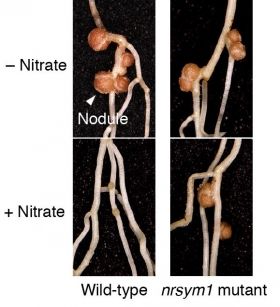African leaders have adopted a new index that helps track progress in mass treatment of neglected tropical diseases (NTDs) in Sub-Saharan Africa.
articles
Study Sheds Light on How Plants Get Their Nitrogen Fix
Legumes are a widely consumed family of plants that serve as a significant source of dietary protein, fiber, and other essential nutrients. They obtain nitrogen through a specialized process known as nodulation, a symbiotic partnership in which soil bacteria infect the root of a plant, form bulb-like nodules, and convert nitrogen into a plant-friendly form. Understanding how nodulation is regulated may aid environmental efforts to improve legume crop efficiency and reduce the need for chemical fertilizers.
Study shakes up fracking-quake conventional wisdom
Oil and gas companies can influence the number of fracking-related earthquakes they may unintentionally generate by changing the volume of fluids injected during the extraction process, a study by Western seismic expert Gail Atkinson shows.
New Treatment Strategies for Chronic Kidney Disease from the Animal Kingdom
The field of biomimetics offers an innovative approach to solving human problems by imitating strategies found in nature. Medical research could also benefit from biomimetics, as a group of international experts from various fields, including a wildlife veterinarian and wildlife ecologists from Vetmeduni Vienna, point out using the example of chronic kidney disease. In future research, they intend to study the mechanisms that protect the muscles, organs and bones of certain animals during extreme conditions such as hibernation. The possibilities were published in Nature Reviews.
Applied study project investigates relevancy of supercluster proposals
University of Lethbridge student Katie Quinn had the opportunity recently to complete an applied study at Lethbridge County that focused on agricultural superclusters and how one would best contribute to the county. Her research culminated in a special presentation to Lethbridge County Council.
Fungal Enzymes Could Hold Secret to Making Renewable Energy from Wood
An international team of researchers, including scientists from the University of York, has discovered a set of enzymes found in fungi that are capable of breaking down one of the main components of wood.










